Trending
Opinion: How will Project 2025 impact game developers?
The Heritage Foundation's manifesto for the possible next administration could do great harm to many, including large portions of the game development community.
Taking a look at how most modern military shooters are mechanically based on abstracting World War 2.

Battlefield 1 has been compared to a WWI-skinned WWII game, so is it? Well, the better question is which military shooters aren’t WWII games? Fewer than you think. Possibly every mainstream military shooter owes its design to World War 2.
World War 2 is a great setting for games. But any gamer around in the early 2000s remembers everyone being sick of WWII shooters. They got a bad rap largely due to Medal of Honor sequelitis, and an unhealthy obsession across multiple franchises with the American Airborne in Normandie. Otherwise it was a field of excellent, and mechanically diverse shooters: Medal of Honor: Allied Assault, Battlefield 1942, Call of Duty, and Brothers in Arms.
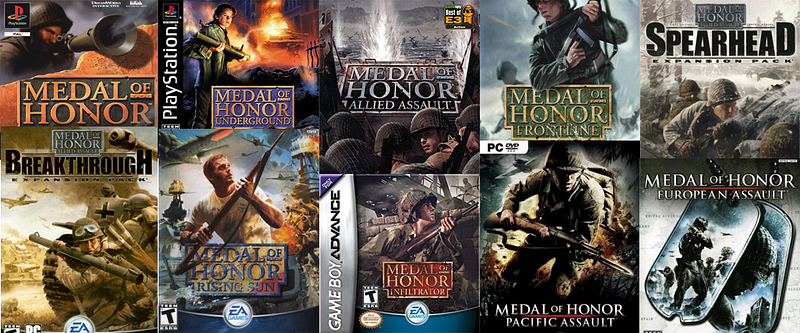
Medal of Honor games released from 1999 to 2005 on various platforms, all WWII. It would be 5 more years and 4 more games before the series left chose another setting in 2010.
Still, the industry recognized players’ fatigue with the setting and moved on to modern conflicts. But the WWII shooter never went away. It just stopped dressing like a WWII shooter.
Almost the entire military shooter sub-genre is using a game model designed as an abstraction of World War 2 combat. The setting of choice has shifted to present and near-future, but the mechanical depiction of combat remains mostly unchanged.
Consider that WWII shooters were indeed so pervasive in the early 2000s that “WWII shooter” and “military shooter” were synonymous. Not only was there no distinction, but “military shooter” was not an established or popularized genre before this. The most popular incarnation from that period, Call of Duty, became the gold standard for the genre after its popularity exploded with Modern Warfare. Though this followed contemporary militaries, its only major mechanical innovations over its predecessors were multiplayer rewards. At its core Call of Duty: Modern Warfare is a modernized, re-tuned, and re-themed Call of Duty, a WWII shooter.
What is this model then, and how did it come out of modeling WWII in Europe specifically?
First is the nature of the fighting itself. In WWII you have a strategic climate where two tremendous conventional armies are clashing across a relatively clearly defined front. As a result fighting is ongoing and linear. A given unit has a direction to advance, and they fight things in their path. When an enemy is encountered they are concentrated in large units. The result is a concentrated, and furiously intense battle over important locations.
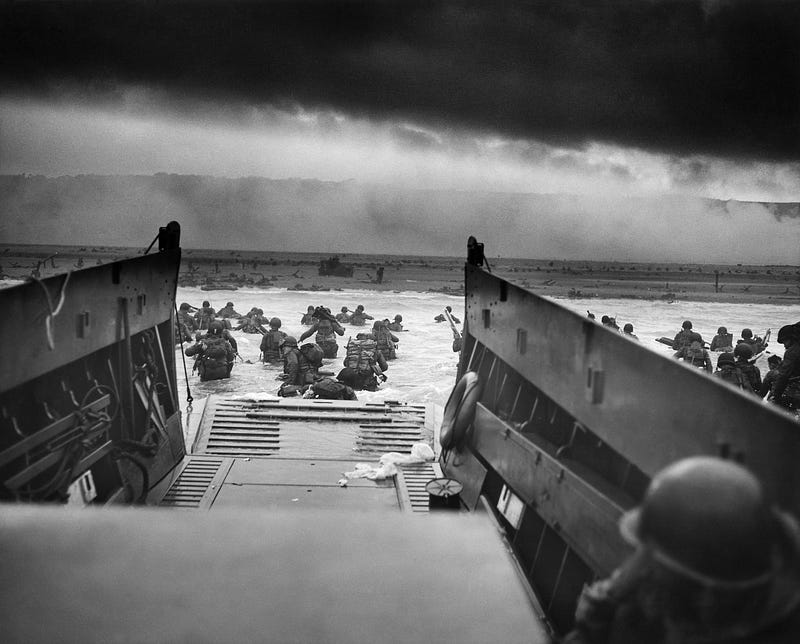
Countless works of fiction, games and otherwise, draw on the dramatic imagery of real battles like the D-Day landings for inspiration.
Dramatic moments, ongoing narratives as battles and campaigns progress, and impressive landmarks all come out of this. Things we now associate with Call of Duty’s formula.
Contrast this to Call of Duty and Medal of Honor’s attempts at bringing their games to the Pacific. That war was fought in a markedly different way, and place. And it shows in the games. Both series stumbled when they visited the Pacific theatre. Using the same formula each had used in European settings did not fit the unconventional warfare across miles of jungle characteristic of the Pacific war.
There are, of course exceptions that break from the WWII mold. Games like Titanfall and recent series of near-future Call of Duties draw inspiration from earlier shooters, but distinctly break in key areas such as movement. Though I’d argue these are borderline cases where it’s debatable whether they are still military shooters.
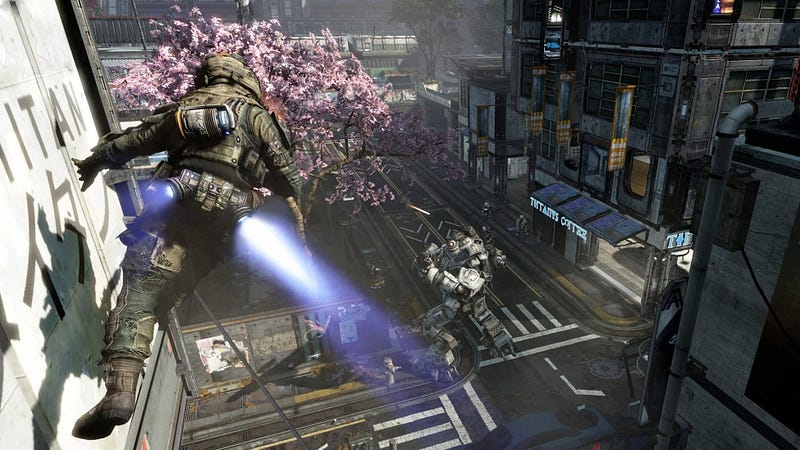
I have trouble calling a shooter with parkour jetpacks and face-punching robots “military”.
Most telling of all though is that this model is less an abstraction of WWII combat as it is specifically of the combat the United States Airborne units faced surrounding Operation Overlord in Normandie.
Following their aerial deployment into France, the 82nd and 101st Army Airborne were charged with taking and/or holding a series of key locations. Their purpose was to cut off the approach of German reinforcements. This meant they were repeatedly placed in the line of fire of fresh, sometimes elite units that often had armored support. On top of this, the Airborne were often short on or completely cut off from reinforcements of their own.
The French countryside is partitioned by hedgerows that are so densely intertwined with stone walls that travel by road was the only remotely efficient option. Hedgerows neatly partitioned combat into distinct areas like stages of a game level. Naturally the key points the Airborne fought over centered on crossroads and towns as a result.
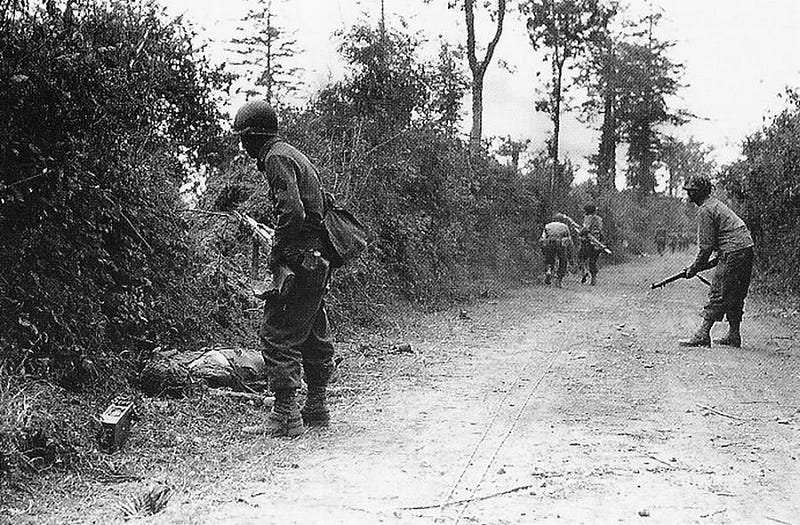
If you want to sum this experience up in simple terms that can be abstracted into a game experience you end up with something like this:
Airborne units are sent to fight in close range in cities or hedgerows where they must leverage their superior combat capabilities and tenacity to defeat a more numerous, often better supplied foe.
Starting to sound a lot like our ‘military shooter’ genre, eh? Well it’s no surprise. Call of Duty, largely credited with crystallizing the sub-genre, featured the 101st Airborne in one of its three campaigns. The other two campaigns have unique tones but also place you on a specialized team (British campaign) or quickly turn you into a specialist despite not starting as one (Soviet campaign). They’re also limited to urban or otherwise claustrophobic environments. And so the above statement can be easily modified to fit them.
Almost start to finish you are an exceptional soldier fighting while impossibly outnumbered in close quarters.
This isn’t even unique to military shooters. The above statement summarizes the design of most popular FPSs that preceded WWII shooters. The US Airborne operations lend themselves naturally to be depicted using a similar language of design. In fact much of the conflict did.
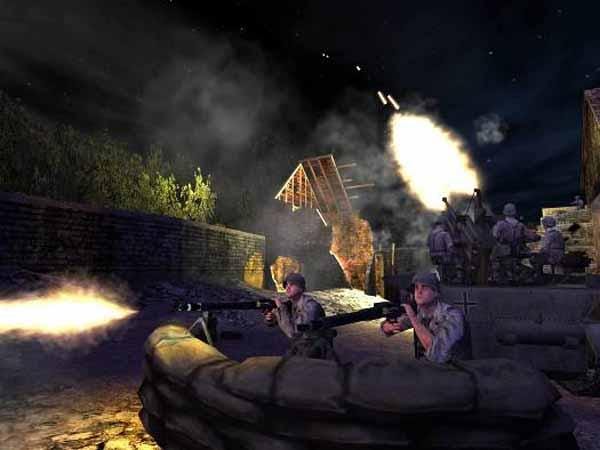
Shooters are founded on the agency of an individual, and spectacle of action. Interestingly if you look at periods of warfare before or after World War 2, or even other parts of the conflict, you find these elements more difficult to extract. If you go to World War 1 or earlier you get situations where the individual soldier was far less likely to have any effect on the outcome of a battle. Men moved, fought, and died in ‘organized’ groups. Once firearms became standard, tactical combat was extremely static by today’s standards. If you go in the opposite direction in time you quickly run into conflicts defined by mixes of unconventional warfare, and shooting at distant blips across deserts. The former, again, undermines player agency, and the latter diminishes the drama.
This isn’t to say these conflicts can’t be made into excellent shooters, or that the shooter formula we know can’t work on them. It does. Great games like Battlefield Vietnam, 2, and 2142 show its flexibility. But as with the criticisms of Battlefield 1, the disconnect between the conflict and its representation is often noticeable. These other conflicts do not lend themselves to these principles of shooters, or to creating this military shooter model like WWII does.
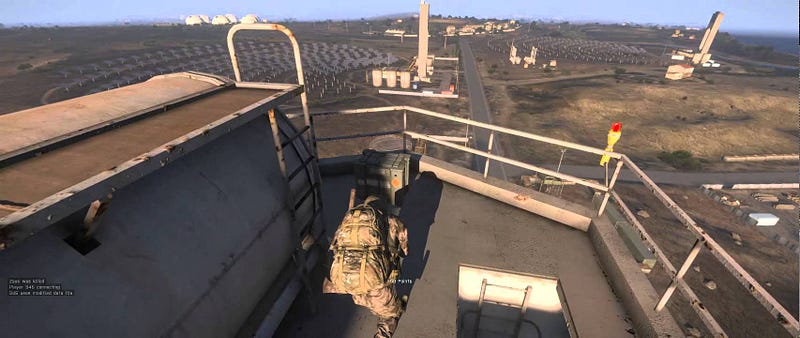
Imagine the already less-mainstream ArmA 3 if you sat watching this for hours before dying to a sniper, and you’ll start to see why unconventional warfare is difficult to translate to mainstream games.
World War 2’s reality and perception also play into the aesthetics of game design. You have a conflict where each of the major armies is not only characterized by different fighting styles, but actually has visually and functionally distinct equipment. Military technology was still advancing at tremendous speeds, and different countries developed in different directions to reflect their combat doctrines. And we have stereotypes of the sides equally founded in reality and exaggerated recollection. Combine them all, and you get these ‘factions’ that would be genius if a game designer conjured them from her imagination:
German:
They are the wild cards. Out of historical darkness they emerged with the highest quality soldiers, and fighting equipment in the European Theatre. Smart and capable, they only fail by way of blind aggression which both over-extends them and leaves them one against the world.
British:
Stoic veterans that are few in number, they represent the old guard and have the weapons to match. But they stand their own as the most disciplined and professional bunch on the field.
American:
Scrappy and inexperienced, they succeed through stubbornness, and individual initiative. They have a righteous belief in their actions, and kinship among their bickering brothers in arms. Their equipment is new, but not top of the line, but they don’t mind because it gets the job done.
Soviet:
Masses of untrained peasants who rely on their numbers, and sheer force of gritty determination. They succeed on the backs of their endurance, harsh weather, unrelenting industrial might, and fierce drive to defend their homes. Their weapons are above all simple and reliable.
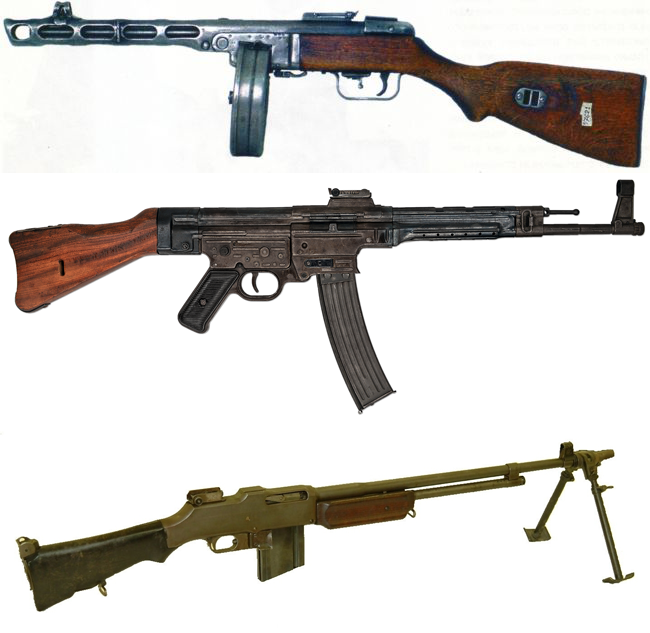
Soviet, German, and American guns. Not just visually distinct, but with no direct counterparts in the other two armies*.
These are obviously exaggerated stereotypes, but that’s exactly the point. That’s what you want for an appealing escapist universe. Just look at Tolkien. Part of what makes his setting so appealing is that the different races do have such distinct and overbearing cultural characteristics. It’s difficult to look at modern society and call the lack of diversity within each of Tolkien’s races realistic. They make for a rich setting not in spite of this, but because of this.
The mythos of World War 2 does the same. It’s not just great for fiction, it’s perfect for gamification. Imagine if everything else were the same, but military shooters’ formula was adapted from modern combat. Well unlike World War 2 you’d have almost every weapon of every side with direct equivalents: assault rifle, sniper rifle, semi-automatic pistol, etc. The standardization of modern militaries is such that many nations’ firearms use identical ammunition. Some even accept other nations’ gun magazines.
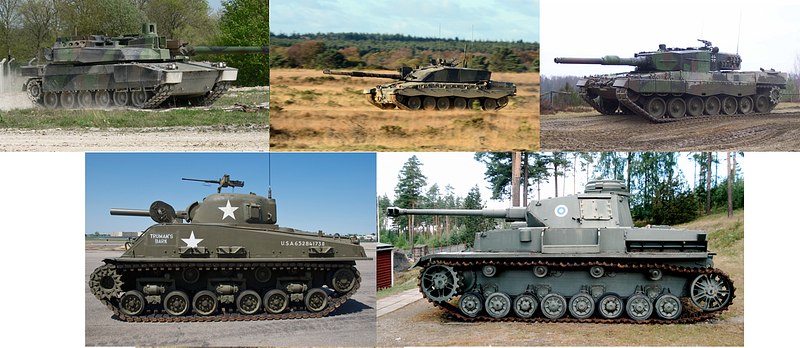
Unless you know tanks it’s easy to glance at the 3 modern tanks above and think any of them might be the same model. In World War 2 design goals and techniques varied much more from nation to nation.
Last, but not least, we can objectively point to why the military shooter genre was modeled on Americans in World War 2 when it was. It’s simple: Hollywood. Saving Private Ryan was raking in money with its gritty depiction of World War 2. At a time when game publishers were starting to have the funds for major productions, but still looking for safe bets, this was the perfect opportunity. You can even see this influence in the games themselves. Medal of Honor: Allied Assault drew heavily on Saving Private Ryan, while Call of Duty pulled from the similarly popular Band of Brothers and Enemy at the Gates.

Left: Saving Private Ryan. Right: Medal of Honor: Allied Assault
So there you have it! We know why World War 2 was a good fit for shooters, and why it was able to get top publisher funding for so long.
It’s great that Call of Duty and its kin refined such a robust model. But it is only one possible adaption of many, of one experience of many, on one front of many in the whole of World War 2. War is an immensely complex topic. Here’s an extremely brief and non-encompassing look at alternative focuses for a game abstracting war:
The Slowness
Most soldiers in most conflicts at most times are not fighting. There is a tremendous amount of downtime between engagements.
The Range
Many, if not most engagements in a conventional war have soldiers taking shots at dark blips hundreds of feet away.
Reconnaissance
Simply locating an enemy’s exact position is a critical and time consuming part of modern conflicts.
Unconventional Warfare
This covers an absolutely massive spectrum that tends to have more to do with careful planning than actions or maneuvers in combat.
Orders and Hierarchy
There is a restriction to personal agency at all levels of the military. None can perfectly control the orders they receive, nor how those they issue are executed.
Psychology and Morality
As such an extreme experience, war evokes distinct personal reactions.
Comradery
Brother in arms seems to be one of the few relationships that rivals familial, romantic, or religious love in strength of bond.
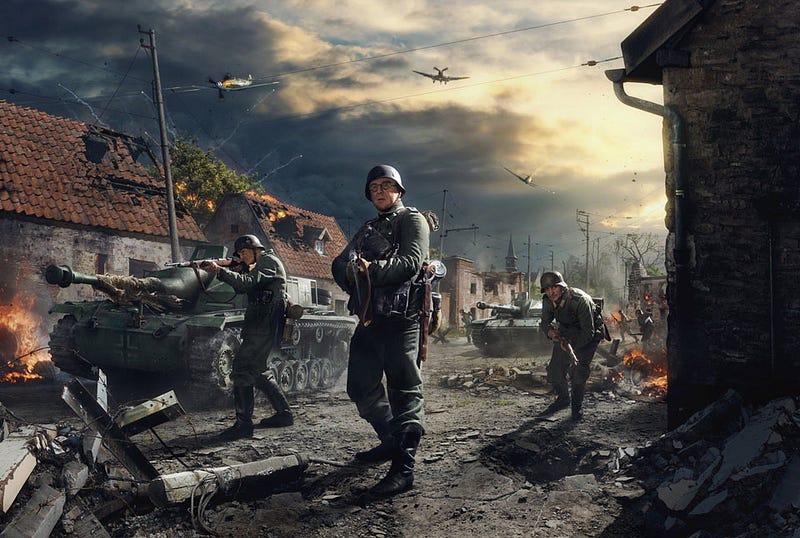
WWII is uniquely perfect for video game adaption. It features a staggering array of visually and geographically distinct locations, armies, types of conflict, surprisingly distinct weaponry between the sides, and a transitional period where military doctrine was finding its footing. We should both embrace it for the wealth of inspiration it offers, and be aware of the reach it’s had already so that we can grow the military shooter beyond its constraints.
* Gun Caption Context: For sticklers, other armies did have very rough equivalents but only to the extent that they could be classified in the same family of gun. The PPSh was the only drum-fed SMG intended to be sprayable, and the BAR the only small-mag LMG intended to be carried and operated by 1 man that were mass produced on such a scale.
Read more about:
BlogsYou May Also Like